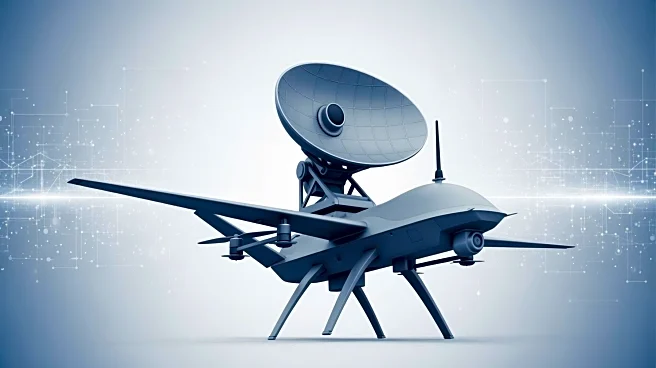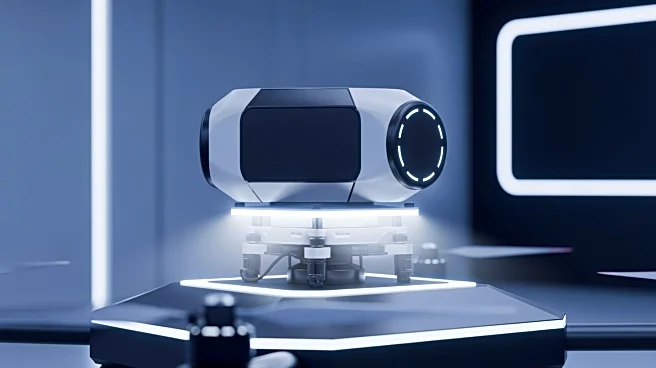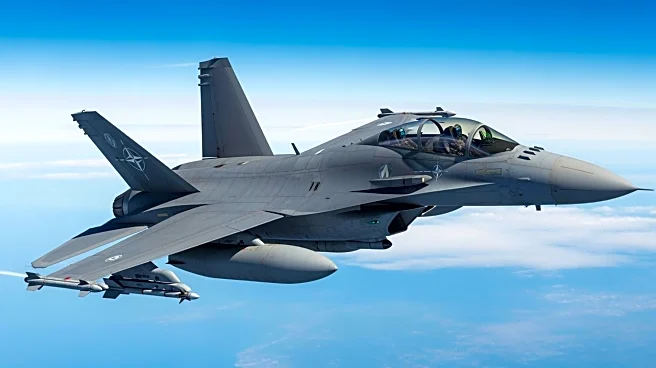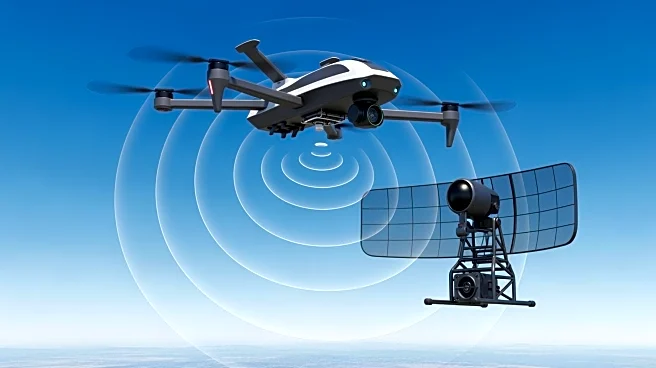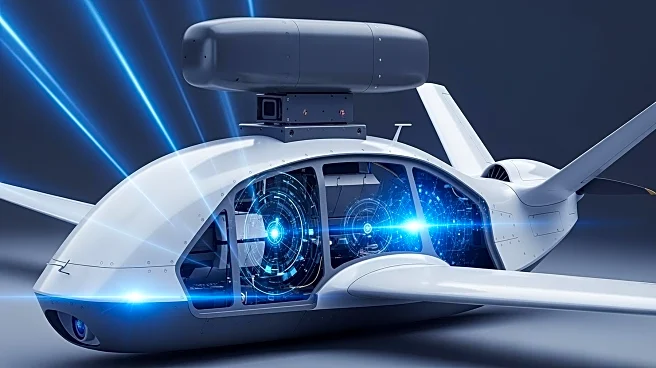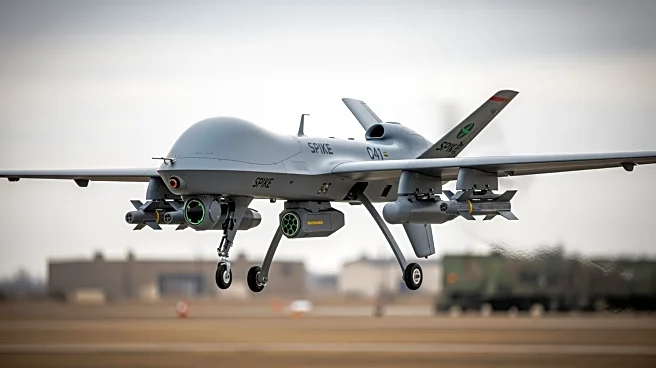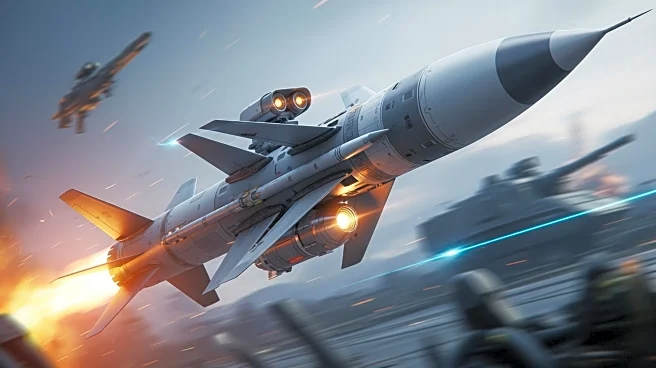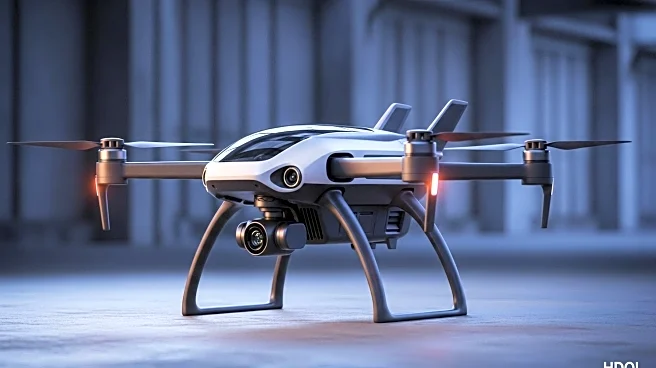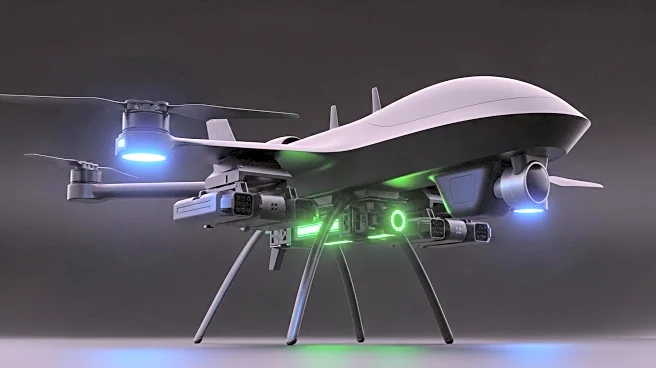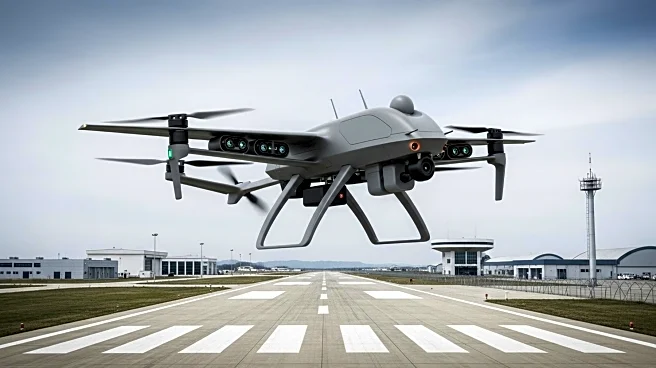What's Happening?
Germany's Hensoldt and Avilus have announced a strategic partnership to integrate the PrecISR radar onto the Bussard unmanned aircraft system (UAS). The PrecISR radar, an active electronically scanned
array (AESA) radar, operates in X-band and uses gallium nitride (GaN) chips. It is capable of detecting and tracking over 1,000 objects simultaneously, providing ultra-high-resolution synthetic aperture radar (SAR) imagery and moving target indicator (MTI) capabilities. The Bussard UAS, equipped with an electro-optic/infrared gimbal and laser designator, is designed for intelligence surveillance, target acquisition, reconnaissance (ISTAR), and close air support (CAS).
Why It's Important?
The integration of advanced radar technology into UAS platforms represents a significant advancement in surveillance and reconnaissance capabilities. This collaboration enhances the operational effectiveness of the Bussard UAS, making it a valuable asset for military and defense applications. The ability to detect and track multiple objects simultaneously is crucial for situational awareness and decision-making in complex environments. This development may also influence the broader UAS market, encouraging further innovation and integration of cutting-edge technologies into unmanned systems.
What's Next?
The partnership between Hensoldt and Avilus may lead to further developments in UAS technology, potentially expanding the capabilities of the Bussard and other UAS platforms. The successful integration of the PrecISR radar could pave the way for additional collaborations and innovations in the field of unmanned systems. As the demand for advanced surveillance and reconnaissance solutions grows, this partnership may inspire similar initiatives aimed at enhancing UAS capabilities.
Beyond the Headlines
The integration of advanced radar systems into UAS platforms underscores the increasing importance of unmanned systems in modern warfare. This development reflects a broader trend towards leveraging technology to enhance military capabilities, particularly in surveillance and reconnaissance. The ethical and legal implications of using advanced UAS technology in military operations may require careful consideration, particularly in terms of privacy and data security.
